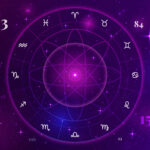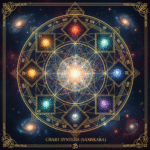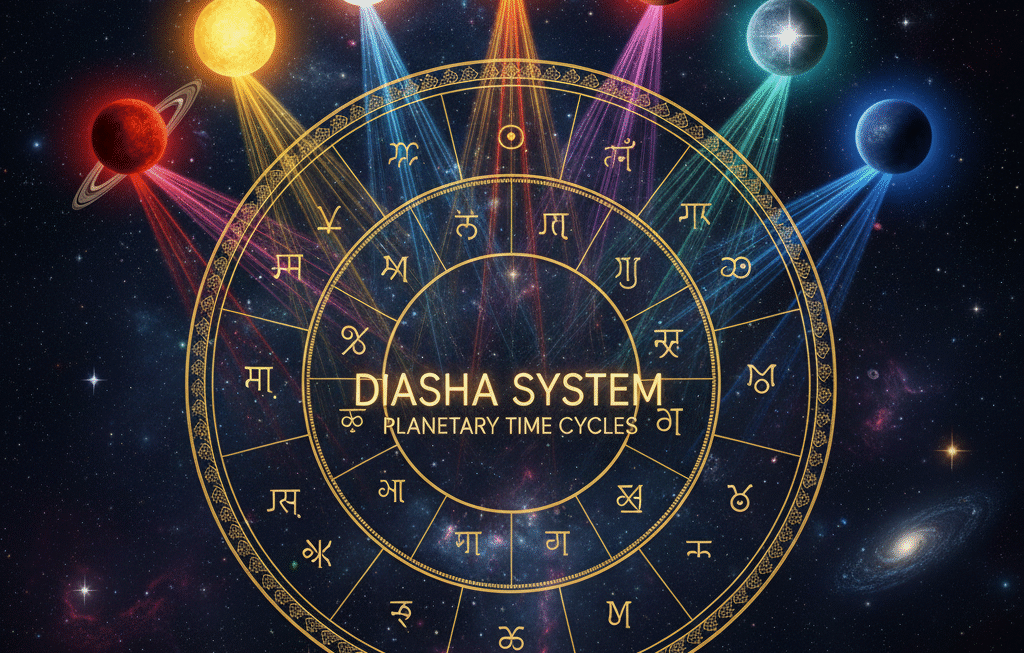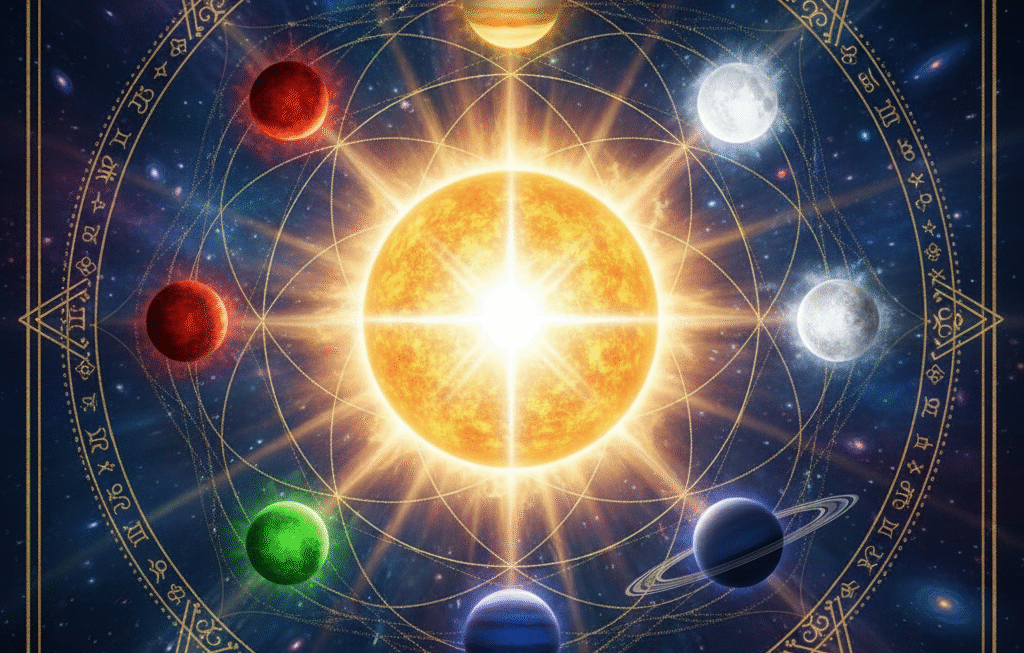Ever looked at a Vedic birth chart, or Kundli, and felt a surge of both fascination and utter overwhelm? You’re not alone. For many spiritual seekers and self-discovery enthusiasts, the intricate web of lines, symbols, and numbers can seem like an impenetrable code. It’s easy to feel lost, staring at what appears to be just a confusing box of cosmic scribbles. But what if I told you that within that seemingly complex diagram lies the blueprint of your soul, a profound guide to your life’s journey? And what if I also told you that understanding its basic birth chart structure is far more accessible than you think?
This comprehensive guide is designed to demystify your Kundli. Consider me your personal mentor, holding your hand as we embark on this exciting journey of discovery. By the end of this post, you’ll not only be able to open your own Vedic birth chart but also confidently identify its key components. We’ll break down the kundli structure into simple, digestible steps, empowering you to begin interpreting its wisdom for yourself. So, take a deep breath, grab a cup of your favorite tea, and let’s unlock the secrets of your cosmic map together.
Getting Started: Generating Your Own Birth Chart
Before we dive into the anatomy of a birth chart, you’ll need one in front of you. Fortunately, generating a Vedic birth chart online is free and straightforward. You’ll need your exact birth details:
- Date of Birth: Day, Month, Year
- Time of Birth: As precise as possible (HH:MM AM/PM). This is crucial! Even a few minutes can shift the Ascendant, altering the entire chart.
- Place of Birth: City, State, Country.
Many reputable websites offer free Vedic chart calculators. Simply input your details, and it will generate your Kundli. Keep this chart open on your screen or print it out, as we’ll be referring to it constantly throughout this guide.
Here’s a visual representation of the kind of birth charts we’ll be discussing:

The Foundation: Understanding the Two Main Chart Styles
Vedic Astrology primarily uses two main chart styles, North Indian and South Indian. While the information contained within them is identical, their visual presentation differs significantly.
- North Indian Chart (Diamond Style): This is the most common style in Northern India. It uses a diamond-shaped grid where the houses are fixed in their positions, and the zodiac signs move through them.
- South Indian Chart (Square Style): Predominant in Southern India, this style uses a square grid where the zodiac signs are fixed, and the houses move through them.
For this guide, we will primarily focus on the North Indian style due to its widespread use in introductory texts, but the principles apply to both. The most crucial element, the Ascendant, is present in all styles.
The Most Important Starting Point: The Ascendant (Lagna) and the 1st House
This is where the magic begins. The Ascendant, also known as the Lagna, is the single most important starting point in any chart analysis.
- Opinion: The Ascendant (Lagna) is the cornerstone of your entire birth chart. Without it, you cannot orient yourself.
- Reason: It represents you – your physical body, your temperament, your initial impressions, and the unique lens through which you perceive and experience the entire world. The entire chart is oriented around this single point, dictating the house placements of all other planets and signs. It’s your personal cosmic GPS.
- Example: In a North Indian chart, you will find the letters “As” or “Lagna” in one of the 12 boxes. This box immediately becomes your 1st House. If “As” is in the top diamond, that’s your 1st house. If it’s in a side box, that’s your 1st house. Every other house is then counted counter-clockwise from this 1st House.
- Opinion/Restatement: Therefore, your absolute first step in understanding your Kundli is to locate your Ascendant and identify your 1st house. Don’t move on until you’ve found it!
Now, look at your own chart. Can you find the “As” or “Lagna” symbol? Which box is it in? This is your 1st House. Congratulations, you’ve just unlocked the entry point to your chart!
Demystifying the Domiciles: The 12 Houses of the Birth Chart
Once you’ve located your 1st House (your Lagna), the rest of the birth chart structure falls into place. The 12 houses are like 12 distinct departments of your life. Each house governs specific areas of experience, from self-identity to relationships, career, spirituality, and more.
Here’s how to number the houses in a North Indian chart:
- Locate “As”: This is your 1st House.
- Count Counter-Clockwise: Move to the next box in a counter-clockwise direction. This is your 2nd House. Continue this process until you’ve labeled all 12 houses.
Let’s visualize this:

- Opinion: Understanding the significations of each house is fundamental to interpreting any chart.
- Reason: Planets placed in a house, or the zodiac sign ruling a house, will influence the themes associated with that particular life area. Without knowing what each house represents, the planets and signs are just floating in a vacuum.
- Example:
- 1st House: Self, body, personality, general well-being.
- 2nd House: Wealth, family, speech, food habits.
- 3rd House: Siblings, courage, communication, short journeys.
- 4th House: Mother, home, comfort, education, vehicles.
- 5th House: Children, creativity, intellect, past life merits, romance.
- 6th House: Health, debt, enemies, service, daily routine.
- 7th House: Marriage, partnerships, business dealings, public image.
- 8th House: Longevity, occult, sudden events, inheritance, transformation.
- 9th House: Father, guru, dharma, spirituality, long journeys, higher education.
- 10th House: Career, status, reputation, public life, recognition.
- 11th House: Gains, income, friends, desires, elder siblings.
- 12th House: Expenditure, losses, foreign lands, spirituality, isolation, subconscious.
- Opinion/Restatement: By correctly numbering your houses and understanding their core significations, you’ve established the basic framework upon which all other analysis will be built. This foundational knowledge is key to truly grasping your horoscope structure.
Now, take a moment to identify your own 12 houses. What areas of life do these houses represent for you? What do you see?
The Cosmic Actors: Planets (Grahas)
Next, we turn our attention to the planets, or Grahas, which are the dynamic forces within your chart. In Vedic Astrology, there are nine primary “planets” that are considered:
- Sun (Surya): Soul, ego, father, authority, vitality.
- Moon (Chandra): Mind, emotions, mother, nourishment, public.
- Mars (Mangal): Energy, courage, aggression, siblings, ambition.
- Mercury (Budha): Intellect, communication, logic, discrimination, business.
- Jupiter (Guru): Wisdom, fortune, guidance, spirituality, expansion, children.
- Venus (Shukra): Love, relationships, luxury, arts, beauty, comfort.
- Saturn (Shani): Discipline, hard work, karma, limitations, longevity, duty.
- Rahu (North Node of the Moon): Desires, ambition, foreign influence, obsession, unconventionality. (Shadow Planet)
- Ketu (South Node of the Moon): Spirituality, detachment, liberation, past life karma, intuition. (Shadow Planet)
You will see symbols (glyphs) for these planets placed within the different houses of your birth chart.
Here are the symbols for the 9 planets:

- Opinion: Planets are the active agents in your chart, driving events and shaping experiences.
- Reason: Each planet carries its own unique energy and represents a specific aspect of consciousness. Where a planet sits in a house, and in which zodiac sign, will tell you how that life area is energized and expressed. They are the ‘doers’ of the chart.
- Example: If your Sun (representing your soul and ego) is placed in your 10th House (career and status), it suggests that your identity and sense of purpose are deeply intertwined with your professional life and public recognition. If Mercury (communication) is in your 3rd House (communication), it indicates a strong, perhaps even powerful, ability to express yourself.
- Opinion/Restatement: Identifying which planets reside in which houses is your next critical step in beginning to understand the dynamic interplay within your chart anatomy.
Now, locate the planets in your chart. Which houses do they occupy? Start to ponder what this might mean, given what you now know about the houses and planets.
The Cosmic Stage: Zodiac Signs (Rashis)
The numbers you see in the houses of your North Indian chart represent the zodiac signs (Rashis). There are 12 zodiac signs, just like there are 12 houses, and each sign also carries distinct characteristics and influences.
Here’s the correspondence between numbers and signs:
- Aries (Mesha)
- Taurus (Vrishabha)
- Gemini (Mithuna)
- Cancer (Karka)
- Leo (Simha)
- Virgo (Kanya)
- Libra (Tula)
- Scorpio (Vrischika)
- Sagittarius (Dhanu)
- Capricorn (Makara)
- Aquarius (Kumbha)
- Pisces (Meena)
- Opinion: The zodiac signs act as the filter or the ‘costume’ through which the planets express their energies within a particular house.
- Reason: A planet’s nature is modified by the sign it occupies. While the house tells you where in life the energy manifests, the sign tells you how it manifests. For example, Mars in Aries will express courage differently than Mars in Cancer. The sign adds flavor and nuance.
- Example: If your 1st House (you, your personality) has the number ‘4’ in it, it means your Ascendant sign is Cancer. This suggests you might be nurturing, emotional, and home-loving. If your 10th House (career) has the number ’10’ (Capricorn), it indicates a career path characterized by discipline, structure, and hard work.
- Opinion/Restatement: By identifying the zodiac signs in each house, you gain a deeper understanding of the specific qualities and expressions of both the houses and the planets within them, enriching your comprehension of the Vedic chart explained to you.
Take a look at your chart again. What numbers are in your houses? What zodiac signs do they correspond to? What does the sign in your 1st House (your Ascendant sign) tell you about yourself?
Bringing It All Together: The Holistic View
You now have the fundamental tools to begin decoding your Kundli. You can:
- Locate your Ascendant (Lagna) and 1st House.
- Number all 12 houses counter-clockwise.
- Identify the planets within each house.
- Determine the zodiac signs ruling each house.
The true power of Vedic Astrology lies in synthesizing these elements. It’s not just about isolated facts, but about the intricate relationships and interactions between them.
For example, you might observe:
- Planet: Jupiter (wisdom, fortune)
- House: 5th House (children, creativity)
- Sign: Leo (confident, regal, expressive)
This combination might suggest someone with a wise approach to parenting, strong creative abilities, or even fortunate children who are confident and charismatic.
Conclusion: Your Journey Has Just Begun
Learning the anatomy of a birth chart is like learning the alphabet before you can read a book. You’ve just taken your crucial first steps, and you should feel incredibly proud! You’ve moved beyond seeing a confusing box of lines to recognizing the foundational kundli structure.
Remember, this is a journey of self-discovery, not a race. Be patient with yourself, revisit these steps often, and allow the wisdom of your chart to unfold gradually. As you become more familiar with these basic components, you’ll be ready to explore more advanced concepts like planetary aspects, dignities, and dashas (planetary periods).
Keep your chart handy. Revisit it frequently. What new insights are emerging for you? The universe has gifted you a profound map to your own potential – now it’s time to explore it, one step at a time. Happy charting!










